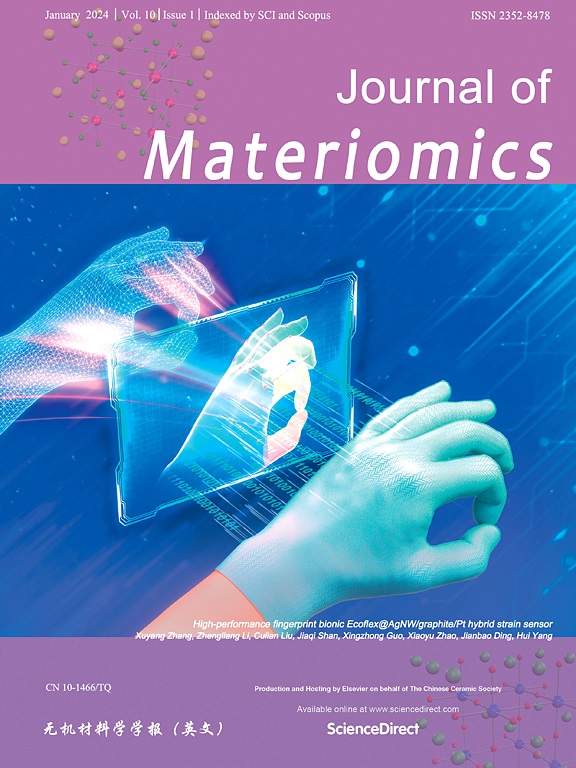Relationships between structure and properties in commercial lead zirconate titanate (PZT) piezoceramics
IF 9.6
1区 材料科学
Q1 CHEMISTRY, PHYSICAL
引用次数: 0
Abstract
Lead zirconate titanate (PZT) ceramics are the most widely used commercial piezoelectric ceramics. However, the relationships between structure and properties are still not completely clarified. In this work, a broad investigation is carried out on commercial PZT 5A, 5H and 4D ceramics. X-ray diffraction revealed that these compounds mainly contain a mixture of P4mm and C1m1 phases at room temperature, and poling induces an increased unit cell distortion in both phases and a higher content of the monoclinic phase. In the poled samples, the Curie point shifts towards lower temperatures, contradicting the Abrahams-Kurtz-Jamieson (AKJ) relation for distorted displacive ferroelectrics. The discordance in the phase transition behavior can be attributed to the decreased domain wall density in the PZT systems. Furthermore, the observed increase of the dielectric permittivity from radiofrequency to the THz range is explained by the increase of the ferroelectric distortion associated with the field-induced transitions and decreased domain wall density. A parameter ψ was introduced to characterize the asymmetry of ferroelectric hysteresis loops. The higher ψ value of the hard PZT 4D ceramic compared to that of soft PZT 5A and 5H is attributed to the pinning effect of oxygen vacancies on domain walls.


工业锆钛酸铅(PZT)压电陶瓷结构与性能的关系
锆钛酸铅(PZT)陶瓷是应用最广泛的商用压电陶瓷。然而,结构与性能之间的关系仍未完全澄清。在本工作中,对pzt5a、5H和4D商品化陶瓷进行了广泛的研究。x射线衍射结果表明,这些化合物在室温下主要含有P4mm和C1m1相的混合物,极化导致两相的单位胞畸变增加,单斜相含量增加。在极化样品中,居里点向较低温度移动,这与畸变位移铁电体的亚伯拉罕-库尔茨-贾米森(AKJ)关系相矛盾。相变行为的不一致可归因于PZT体系中畴壁密度的降低。此外,观察到的介电常数从射频到太赫兹范围的增加可以解释为与场致跃迁相关的铁电畸变的增加和畴壁密度的降低。引入一个参数ψ来表征铁电磁滞回线的不对称性。硬PZT 4D陶瓷的ψ值高于软PZT 5A和5H陶瓷的ψ值,这是由于氧空位在畴壁上的钉住作用所致。
本文章由计算机程序翻译,如有差异,请以英文原文为准。
求助全文
约1分钟内获得全文
求助全文
来源期刊

Journal of Materiomics
Materials Science-Metals and Alloys
CiteScore
14.30
自引率
6.40%
发文量
331
审稿时长
37 days
期刊介绍:
The Journal of Materiomics is a peer-reviewed open-access journal that aims to serve as a forum for the continuous dissemination of research within the field of materials science. It particularly emphasizes systematic studies on the relationships between composition, processing, structure, property, and performance of advanced materials. The journal is supported by the Chinese Ceramic Society and is indexed in SCIE and Scopus. It is commonly referred to as J Materiomics.
 求助内容:
求助内容: 应助结果提醒方式:
应助结果提醒方式:


